A few months ago, my trusted set of transcription headphones disintegrated. After 5 years of faithful service, the plastic headband that held them together broke. I tried to get another pair, but the manufacturer had discontinued the model. So I set out to find another pair of transcription headsets to work with.

After trying out several models from different manufactures, I’ve finally found a winner that is perfect for transcription work. The Senal SMH-1000 are the best headphones for transcription work that I’ve ever used. Period. Mind you, I’ve been transcribing for over 10 years and I’ve tried and used over 20 different models.
Here are my top 3 recommendations for headphones for transcription work.
1. Behringer HPM1000
I was attracted to these Behringer HPM1000 because they were really cheap. I am a cheapskate. And the build quality shows why they are so cheap.
The earcups are a little too large for me. They didn’t fit perfectly – the headband is wide and flat and so they fit awkwardly. The earpads are also a little hard, but I’m sure they get softer with use.
However, they do look durable. The headband is made from a plastic mold. And the cord is not detachable. If you take good care of them, I’m sure they’d last at least a couple of years.
For the price, I was surprised how good they sounded. But compared to the Senal SMH-1000, they sound like crap. They are very bass heavy and lack mid and high ranges. Out of five, I’d rate them a 2 for comfort, 3 for durability and 2 for dialogue intelligibility. Good if you are on a very tight budget – but you get what you pay for. Check price on Amazon.
2. Senal SMH-1000
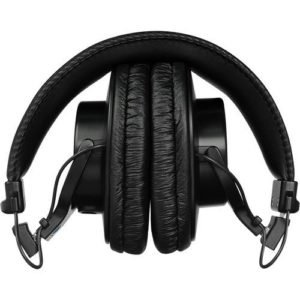
To reiterate, the Senal SMH-1000 is the best headphone for transcription that I’ve ever used. The earcups were small enough to snugly fit over my ears. If you have large ears you can get the Senal SMH-1000 with extra deep ear cushions.
The rounded headband, soft cushions, and the swivel mechanism makes for a very comfortable, snug fit.
Very durable build and look, with stainless steel hinges and metal earpiece backs. But what sets them apart is the detachable cord, what a godsend! They come with 2 cords, a 10 feet coiled cord and 3 feet straight cord.
My only wish was the straight cord was longer. And I got feedback from other users that they are uncomfortable with glasses on. However, the sound is simply superb. Simply perfect for transcription. Check price on Amazon.
3. Sony MDR7506
The Sony MDR7506 are as good as the Senal SMH-1000. Very comfortable. Durable, but they cord is not detachable!
I fear this is the Achilles Heel of this pair of headphones. I foresee the cord breaking in the future, when I stand up too quickly, and I won’t be able to replace it. Which is sad, because these are a really good pair of headphones.
Compared to the Senals, I’d say they are better for listening to music. The Senals have lower bass and a higher dialogue intelligibility – the audio sounds cleaner, I prefer the Senals for transcription. Check price on Amazon.
Summary: Here’re the best headphones for transcription:
Behringer HPM1000
Good for transcribers on a tight budget.
- Comfort 6/10
- Durability 8/10
- Dialogue Intelligibility 8/10
Senal SMH-1000
Best headphones for transcription I’ve ever used.
- Comfort 10/10
- Durability 8/10
- Dialogue Intelligibility 10/10
Sony MDR7506
If you can’t find the Senals, get these.
- Comfort 10/10
- Durability 9/10
- Dialogue Intelligibility 9/10
Understanding Headphones
USB vs 3.5mm jack headphones
Headphones jacks are used to connect to your desktop computer or laptop. You have 2 choices, a USB or 3.5mm (1/8 inch) jack.
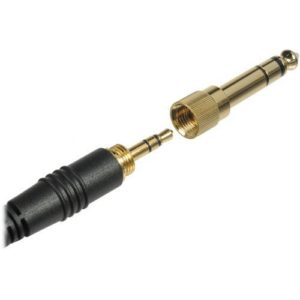
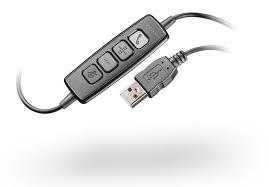
All USB headphones come with a sound card, and the quality of the sound card greatly determines the quality of the sound. If you plan to buy a USB transcription headphone make sure you get a high end one (and be prepared to pay quite a bit for them). And the sound card is usually attached, which mean that it can easily break or become detached. Personally, I prefer 3.5mm jack headphones. They are more durable, less breaking points, and though USB jack tend to get you better sound, 3.5mm jacks are pretty good.
Earbuds vs over ear vs on-ear headphones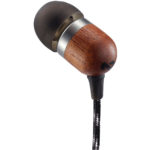
This is the most important component of a good set of transcription headsets. Comfort and noise rejection are two critical factors when making the choice of what works for you. With earbuds, earphones or in the ear headphones, the “drivers” (the part of the headphones that converts electric signal to sound, think speakers) are inserted into the ear canal. This will give you very good noise rejection, but can be very uncomfortable – especially if you are using them for a long time. I tried a pair and my ears were aching after 3-4 hours of use. Wouldn’t recommend getting earbuds for transcription.
On ear headphones (also known as Supra-aural headphones) rest on top of your earlobe. They offer pretty good noise rejection, are more comfortable than earbuds. If you sweat a lot, these are better than over the ear headphones, but less comfortable. And if they are too tight, they’ll hurt your earlobes.
Over-ear (circumaural)/closed-ear headphones have earcups that go over the ear and surround it with padding which makes them very comfortable. They don’t have very good noise rejection, so if you intend to transcribe in a noisy environment (for example near a loud fan), quite a bit of sound will come through. This can be distracting when transcribing. I transcribe in a relatively quiet room, so I find them to be perfect for transcription.
Corded vs bluetooth wireless headphones
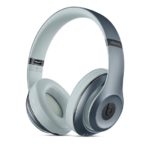
Corded headphones transmit the sound via a cord. Simply plug them into a computer and you’re good to go (some USB models will require you install drivers).
Bluetooth or wireless headphones connect to the phone using Bluetooth. If your computer does not have Bluetooth capabilities, and most desktops don’t, make sure that you get a set with a USB dongle that will enable the Bluetooth headphones to communicate with the computer. And they need to be powered with a battery.
Noise cancelling vs openback
Openback headphones are usually over the ear or on the ear headphones with perforated back that allows more “noise” to filter through. So they have very little noise isolation and wouldn’t recommend them for transcription.
Noise cancellation headphones provide active noise cancellation. It sounds like a good idea, but in practice they are terrible. I bought a pair a few years back and the audio quality was horrible. And this was because they distort the sound, primarily because of how they work to cancel noise out. Wouldn’t recommend noise cancellation headphones for transcription.
Now that you have a good grasp of the key features of transcription headsets, what do I look for when choosing headphones for transcription?
What to Look for in a Transcription Headphone
Comfort
This is a no brainer. Getting a comfortable pair of transcription headphones is very very very important. I have mine on for at least 8 hours a day, 5 days a week. Transcription takes a lot of time, so it’s important that your ears don’t hurt after a couple of hours of transcribing. So, you want to get a pair of headset that reduces ear fatigue. I’ve found the most important feature when buying a pair of headphone is that they are what are known as over-ear headphones.
With over the ear headphones, you have to stuff your ear into the earcup (encasing it). That gives you noise isolation, but more importantly they are very comfortable. After a few hours of wearing a pair of good over-ear headphones, you don’t even notice you have them on!
I’ve found the most uncomfortable transcription headsets you can get are in-ear headphones (the ones that come with most mobile devices). On-ear headphones rest on the earlobe, and so are less comfortable that over-ear headphones.
Durability
Unless you want to replace your pair of headsets every 6 months, you want to get a headphones that are rugged and well-constructed. My last pair were made of a plastic mold for the headband, and that’s what finally broke! I do take very good care of my transcription headphones, I treat them like a baby. But I still had to replace the cord of my old set a few years ago after it “accidentally” tore it off – I quickly stood up while the headphones were still wrapped around my ears! Luckily for me, I got a replacement cord.
Ideally, you want to get a pair of headphones with a detachable cord and replaceable earpads.
Midrange
The most fundamental human voice frequencies lie between 250 Hz and 4000 Hz. That’s known as the midrange of sound. And since transcription requires listening to human voice, it is important that you get a set of headphones have a pronounced yet smooth midrange. Meaning you can clearly hear what people are saying in the recording = high dialogue intelligibility. And this is why headphones that are great for listening to music are not necessarily that great when you are transcribing.
That’s it for this post on headphones for transcription. Hope you like my recommendations. Keep an eye out for new posts on mac transcription software and foot pedals. I’d love to hear from you – any feedback/comments are appreciated. What transcription headsets do you use? What are the main factors that influenced your buying decision? Let me know in the comments below.

Leave a Reply